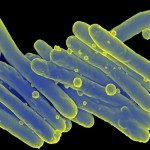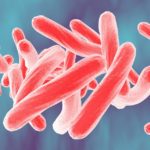Link to Pubmed [PMID] – 24445815
Cell. Mol. Life Sci. 2014 Jul;71(13):2443-50
Skin ulcers are most commonly due to circulatory or metabolic disorders and are a major public health concern. In developed countries, chronic wounds affect more than 1 % of the population and their incidence is expected to follow those observed for diabetes and obesity. In tropical and subtropical countries, an additional issue is the occurrence of ulcers of infectious origins with diverse etiologies. While the severity of cutaneous Leishmaniasis correlates with protective immune responses, Buruli ulcers caused by Mycobacterium ulcerans develop in the absence of major inflammation. Based on these two examples, this review aims to demonstrate how studies on microorganism-provoked wounds can provide insight into the molecular mechanisms controlling skin integrity. We highlight the potential interest of a mouse model of non-inflammatory skin ulceration caused by intradermal injection of mycolactone, an original lipid toxin with ulcerative and immunosuppressive properties produced by M. ulcerans.







